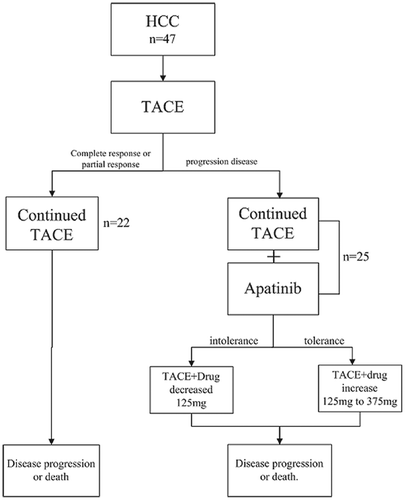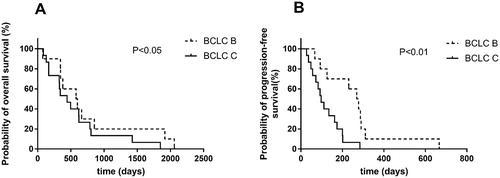Figures & data
Table 1. The baseline characteristics of the 45 HCC patients.
Figure 1. Flow diagram illustrating the treatment process.

Table 2. Best overall response according to mRECIST.
Figure 2. Efficacy of TACE and TACE plus apatinib treatment.

Table 3. The Log Rank analysis of factors for survival benefit in the experimental group.
Table 4. The analysis of BCLC B and BCLC C.
Figure 3. Efficacy of the combination of TACE and apatinib.

Figure 4. Survival curve of TACE and apatinib therapy in BCLC-B group.

Figure 5. Survival curve of TACE and apatinib therapy in BCLC-C group.

Table 5. Outcomes and adverse events.
